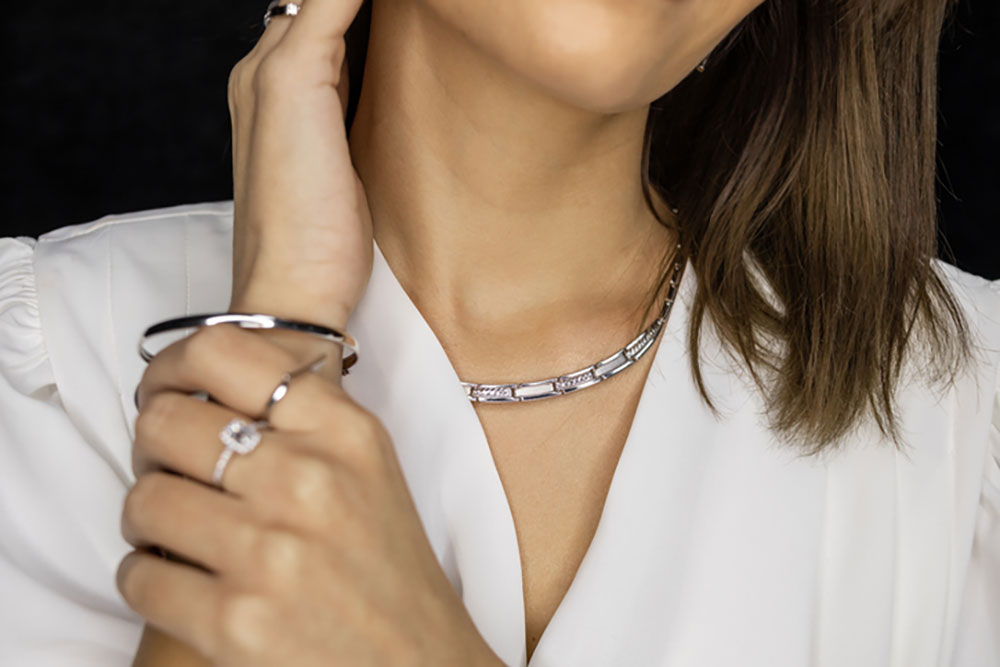
iStock
By Valerie Monroe
If you’re interested in feeling happier about your appearance—especially as you age—you might like reading what she has to say about it. For more of her philosophical and practical advice, subscribe for free to How Not to F*ck Up Your Face at valeriemonroe.substack.com.

Can’t get enough Valerie Monroe? There’s more at https://valeriemonroe.substack.com.
The lights are out in my bathroom. Actually, they stay on for three minutes at a time before flickering off again—which just so happens to aptly describe my attention span this week. I couldn’t focus on the facial kind of beauty (maybe because I can only see myself in small increments), so I’m sharing a story I wrote years ago for O, The Oprah Magazine, about the beauty of things. I’ve added links galore in case you’re in a shopping mood . . . or a window-shopping mood. The older I get, the less interested I am in acquiring stuff, but I still like to look at it—a trait, among no others, I share with Socrates. As Jack Kornfield tells it, “Even Socrates, who lived a very frugal and simple life, loved to go to the market. When his students asked about this, he said, ‘I love to go and see all the things I am happy without.’ ”
Here’s the things story:
My ancient Aunt Esther was often cranky, but when I was little, I didn’t notice. She allowed me to sit very close, enveloped in a cloud of her powdery lilac-water scent, close enough that I could take one and then the other of her soft, perfectly manicured hands in mine, run my small fingers over her pink, slightly opalescent nails, examine her bracelets—burnished gold bangles and links laden heavily with charms, one or two from each city she had visited around the world. Her earrings—for her, only clip-ons—were intricate: tiny, coralline Bakelite blossoms or clusters of freshwater pearls. Aunt Esther was captivating, a museum of adornment and style. Seeing her, despite her unpredictable disposition, always made me happy.
Most of us have an intrinsic interest in pretty things. Don’t you? At a work-related party the other night, I was standing around with several other beauty editors waiting somewhat impatiently for the action to begin when I suddenly noticed that the woman next to me was wearing—along with a lovely but understated skirt and sweater set—crimson pumps. “Oh, your shoes!” I said admiringly, and she smiled as she raised her foot, turning it this way and that so I could see the delicate princess heel. “They make me so happy,” she said. “All I have to do is look at them, and it lifts me right up.”
No surprise in that, says Valerie Steele, PhD, director of the Museum at the Fashion Institute of Technology. “Buying a new pair of shoes, or something even as small as a lipstick, resonates with the idea that we are loved, because it is a kind of gift we give to ourselves.” It may also make us feel renewed, transformed. Ornament yourself with a pair of sparkling earrings or a rope of creamy pearls, a brilliant, rich lip color or a quiet, delicate one, and people can see that you have made an effort, a choice to do yourself up. There is meaning in that effort, says Anne Hollander, historian and writer on art and dress; you are honoring and respecting your physical self and presenting it to the world. But it’s not only your intention that lifts and engages you, she says, it’s the response: Though appreciative glances may go by in a second, when we get them, they make us happy.
Adorning ourselves seems to be as profoundly human as speech, says Steele; we are the only species that does it. Even in cultures where people don’t wear clothes (or much of them), they will drape themselves in jewelry (or flowers, shells, and other nature-made treasures) or ornament their hair. It’s one of the ways we communicate, says Steele.
On a warm July day about 10 years ago, I boarded a bus in a small city in India; I think I was the only Western passenger—I’m pretty sure I was the only Western woman. I know I felt like a foreigner in my khakis, white blouse, Keds, and a head scarf I’d never wear at home. Just as the bus lurched into traffic, I found a seat next to an Indian woman wearing a sari and sandals and lots of interesting jewelry. She politely scooched over to make room for me. From the moment I sat down, we began to peek at each other from the corners of our eyes. My glance fell again and again on the richly embroidered fabric of her sari, on her beautiful glass bangles and silver rings. She was glancing at my own silver bracelets, the pink-gold Deco pinkie ring my father had made for my mother in the 1940s. Finally, seeing that she was looking at my ring, I held my hand over for her to examine it. “Do you like it?” I asked, at which point she turned toward me and we began a very lively and intimate exchange about what each of us was wearing and where it all came from. I learned where she bought her sari fabric and how she came by her bracelets; I learned that she was a lawyer on her way to work and that she was planning one day to travel. I don’t remember her name. But I do remember her resplendent carnelian ring and the happiness we both had admiring it.
One thing I did buy recently—out of necessity—was a pair of prescription sunglasses. You can get them non-prescription, too.
